#Cathedral Basilica of St. Augustine
Text
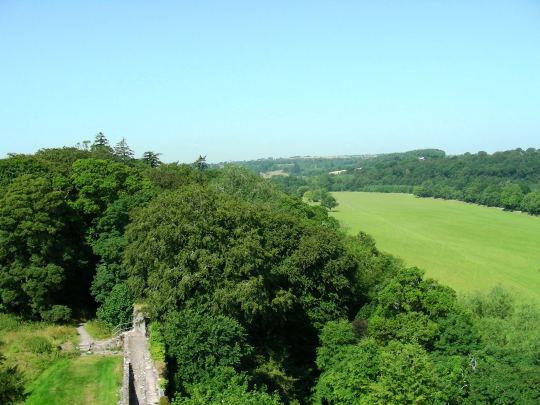





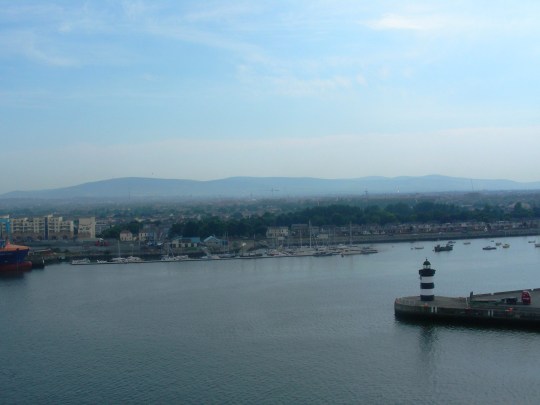



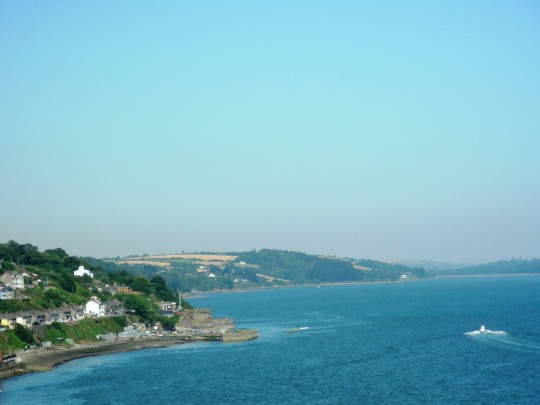

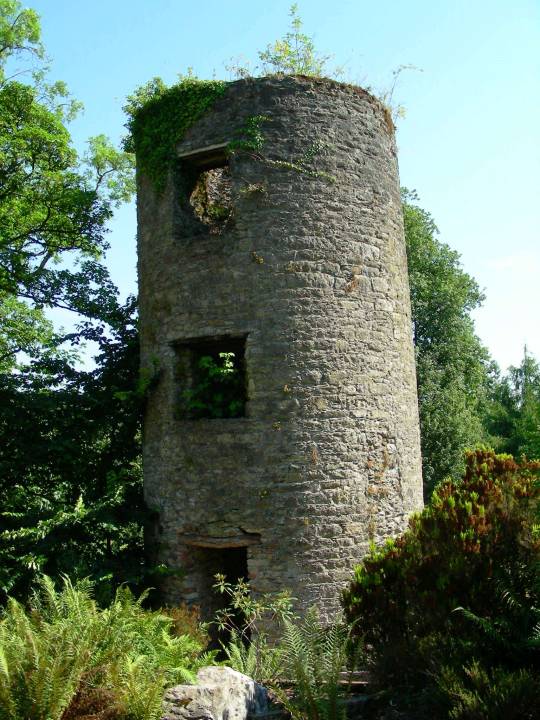
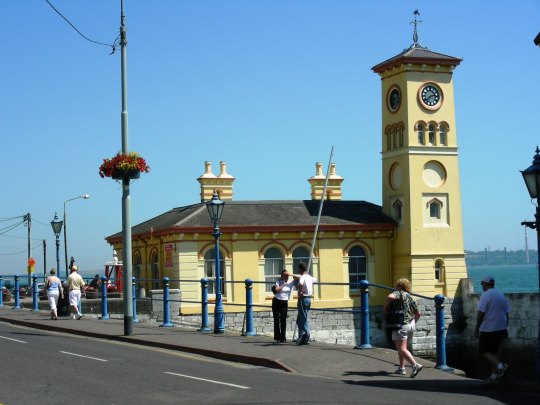
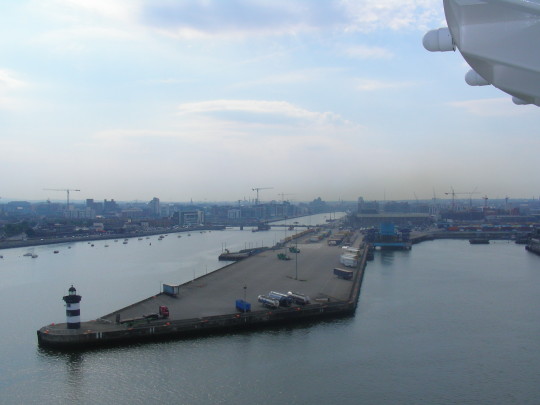
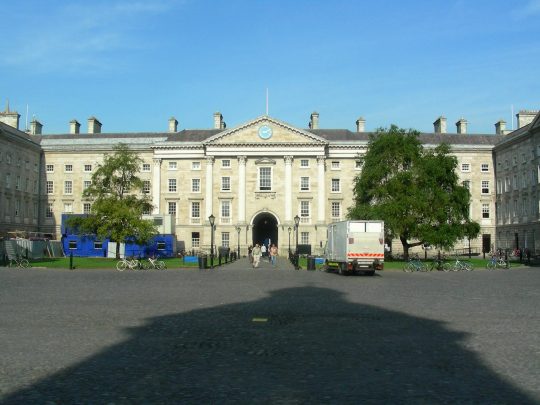


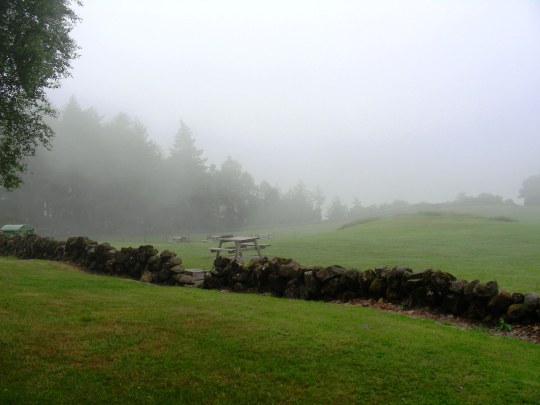

Saint Patrick returned to Ireland as a missionary bishop on April 5, 456.
#Cathedral Basilica of St. Augustine#St Colman's Cathedral#Cobh#Cork#USA#Blarney Castle#Trinity College#Irish Sea#sunset#Liffey River#Dublin#Muir Cheilteach#Ireland#landscape#seascape#countryside#Saint Patrick#St. Patrick#summer 2006#original photography#returned#5 April 456#anniversary#Irish history#architecture#cityscape#tourist attraction#landmark#travel#vacation
33 notes
·
View notes
Text
The Casavant Wish (and Dream) in the Cathedral-Basilica of St. Augustine
I describe the history of the Cathedral-Basilica of St. Augustine as a Three Little Pigs parallel.
The first structure of the church was built probably by wood in haste fashion. But in 1586, a pack of British “big bad wolves” - led by Sir Francis Drake - burned it and the colony of St. Augustine. The colonialists built a second church of palmetto and straw, but it also burned down in 1599.
And despite the construction of Castillo de San Marcos in 1672, the third church was also burned down 30 years later. Masses were held at the chapel of La Solidad Hospital till Florida ceded to the British in 1763.
In 1784, Catholicism returned to Florida when the British ceded it to Spain, which ordered a church to be erected 2 years later. The cathedral was erected in 1797. Though another fire consumed the cathedral on April 12, 1887 - that time caused by a fire at the St. Augustine Hotel (now Flagler College) - it was much more feasible to rebuild, as the coquina walls proved resiliency.
Pope Paul VI designated the cathedral as a minor basilica on December 4, 1976.

Taken on 3/25/2018.
Fast-forward nearly 25 years later, on August 2001. My first time going inside the cathedral was on a day-trip with DCs, DUs, DAs, and DPs. We attended part of Mass, but the organ music sounded convincing. I tried SO hard to pay attention to the homily, but parts of my mind were wondering if the organ was truly a pipe organ.
That got me to make one of my 3 wishes to have a church install a pipe organ in case the said organ accompanying the Mass was electric. Indeed, it was a Rodgers analog one - a 3-manual instrument installed around the time Pope Paul VI designated the cathedral a minor basilica.
"The pipe organ is the authentic organ sound,” Dominican Sister Patricia Eileen Consier, Ph.D., and the cathedral’s then-current music ministry director pretty much described the musical aspect of my pilgrimage, “The totally electronic organ tries to achieve the pipe organ sound. Many times, an electronic organ company will say to you, ‘It sounds just like a pipe organ, doesn’t it?’”
To my 11-year-old ears, it INDEED sounded convincing.
That was most likely why nevertheless, I wished for a real pipe organ that day of my first visit. Little did I know at the time that the parish was ALREADY raising funds for the 3-manual Casavant Opus 3821 installed that Palm Sunday of 2003.
Over a decade later, I had a strange dream of a church that resembled the Cathedral-Basilica of St. Augustine, in a city that was similar to St. Augustine. I didn’t point out in my dream journal that I was touring St. Augustine, but the city was situated on a rocky coast, with palm trees and Spanish colonial architecture.
The interior of the church was strikingly similar to the real-life cathedral. But instead of the wooden pews, it had folding chairs. The facade of the pipe organ was much more distinct compared to reality. It had trompette en chamade pipes that crowned each side of the pipes in the reredos.
After a short walk outside, I revisited the church, but I eyed another set of pipes in the loft, also having a trompette en chamade rank. I woke up before I even got to hear it sing a postlude.
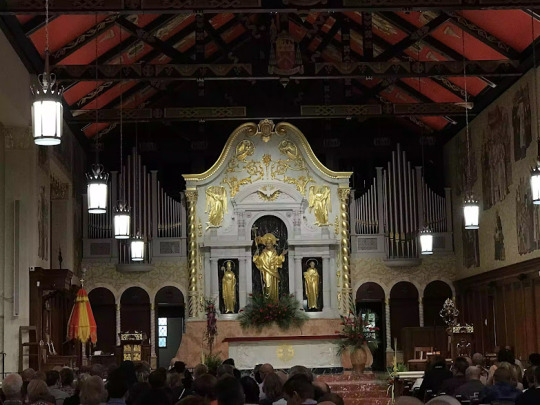
Also taken 3/25/2018.
It wasn’t till Palm Sunday 2018, 15 years after Casavant Freres granted me that wish, I attended another Mass at the cathedral, that time with the wish - which was expanded with the help of Walker Technical - sounding.
The newly-expanded Casavant Opus 3821 didn’t sound like that then-convincing-to-my-Catholic-tween-ears Rodgers analog I heard during the previous Mass a month before the Mournful Morning. (My memory was then fuzzy as the peaches in the peach-mango pies we brunched on with Chickenjoy at the Jax Jolibee a day later.) It was REALLY REAL.
And I sang the hymns with much more gusto than I sang visiting the church at age 11.
I visited it the third time on January 2020, shortly after disembarking the MS Harmony of the Seas. I’m glad to have DM’s college classmate and her adopted son tag us along for not only the cruise on the RCCL vessel as well as Universal Orlando, but also to have them give gratitude to God and to have me show them what I dreamed about in 2012.
I believed that at the time, when coronavirus had yet to hit the USA, one of their three wishes they made was for good health.
“(The Casavant Opus 3821) is the authenticity of Jesus,” Sister Patricia explained, “For example, there are real candles on the altar, not flash lights. The flowers are fresh. Our faith is the most authentic expression of our life. So, everything needs to be the real thing.”
At those visits in 2018 and 2020, the Casavant Opus 3821 sang at Mass Mike Batt’s lyrics:
Better than a dream
Stranger than my wild imagination
If this is a real sensation,
It's better than a dream.
And hearing the wish I made at 11 that Casavant Freres granted in 2003 - IN PERSON - was better than a dream.
#cathedral basilica of st augustine#st augustine fl#dream journal#pipe organ#casavant freres#casavant
2 notes
·
View notes
Photo

The start of the fall semester!!! Saint Dymphna, Saint Augustine and Saint Agatha prayer cards from Cathedral Basilica of St. Augustine. I have favorite saints as touchstones. Little things to help keep me grounded. I survived summer and did great! Now it's time to thrive! (at Cathedral Basilica of St.Augustine) https://www.instagram.com/p/ChjSN12u6VYaXWB5zHehNh-RPkjZZJA6nbmG5U0/?igshid=NGJjMDIxMWI=
1 note
·
View note
Text
Exploring the Rich History of the World's Oldest Churches

Churches hold a significant place in human history, serving as places of worship and cultural landmarks. Ancient churches stand as timeless symbols of faith and craftsmanship. Their significance transcends borders. They inspire awe and reverence. Exploring them is a journey through history and spirituality. Among these, the oldest church in London stands out as a timeless testament to faith and craftsmanship.
The Church of the Nativity, Bethlehem:
It is built over the traditional birthplace of Jesus Christ.
Dates back to the 4th century AD.
Its significance transcends religious boundaries, attracting visitors from all over the world.
St. Peter's Basilica, Vatican City:
Symbolizes the heart of Christianity.
Stands on the site where Saint Peter, one of Jesus' apostles, was buried.
Its construction began in the 4th century and continued over several centuries, resulting in the magnificent structure we see today.
1. Hagia Sophia, Istanbul:
It was originally built as a Christian church in the 6th century AD.
Later, it was converted into a mosque and now serves as a museum.
Its architectural grandeur reflects both Byzantine and Ottoman influences.
Church of the Holy Sepulchre, Jerusalem:
It is believed to encompass the sites of Jesus' crucifixion, burial, and resurrection.
Parts of the church date back to the 4th century AD.
A pilgrimage destination for Christians worldwide, it encapsulates the essence of Jerusalem's religious significance.
San Giovanni in Laterano, Rome:
Known as the "Mother of all Churches."
Founded by Emperor Constantine in the 4th century AD.
Served as the primary residence of the Pope until the construction of St. Peter's Basilica.
1. St. George's Church, Lalibela:
Located in Ethiopia, it is part of a complex of rock-hewn churches.
Dates back to the 12th century AD.
Its unique architectural style and religious significance make it a UNESCO World Heritage Site.
St. Martin's Church, Canterbury:
One of the oldest churches in London.
Built in the 6th century AD by St. Augustine.
Witnessed significant events in English history, including the murder of Thomas Becket.
1. Etchmiadzin Cathedral, Armenia:
It is the oldest state-built church in the world.
It was constructed in the early 4th century AD.
Holds immense religious and cultural significance for Armenians as the mother church of the Armenian Apostolic Church.
2. The Church of St. Peter and St. Paul, Ireland:
Commonly known as the "Rock of Cashel."
Stands atop a limestone hill in County Tipperary.
Its origins trace back to the 4th century AD, with significant additions made in subsequent centuries.
An iconic symbol of Irish heritage and religious history, it has witnessed the rise and fall of kingdoms and spread Christianity across Ireland.
The Church of St. Saviour in Chora, Istanbul:
Originally built as a Byzantine monastery in the 4th century AD.
Renowned for its stunning mosaics and frescoes depicting scenes from the life of Christ.
Converted into a mosque during the Ottoman period and later transformed into a museum.
Its intricate artwork and historical significance make it a must-visit destination for art and history enthusiasts.
Exploring ancient churches reveals human civilization's rich tapestry and spiritual devotion. Each structure testifies to faith, ingenuity, and cultural heritage. They leave an indelible mark on history's landscape. We marvel at their architectural beauty. Contemplating their enduring legacy reminds us of humanity's timeless quest for meaning and transcendence. These sites unite humanity across time and space.
Conclusion:
The world's oldest churches near me are architectural wonders and repositories of faith. From Bethlehem to Lalibela, these sacred sites inspire awe and reverence. Reminding us of the enduring power of spirituality across civilizations and centuries.
0 notes
Text
If you're looking for an unforgettable getaway without breaking the bank, Goa is the perfect destination for you. The city is known for its beautiful beaches, vibrant culture, and delicious cuisine. Goa offers plenty of budget-friendly options for travellers. Here's a pocket-friendly itinerary to help you make the most of your trip to this tropical paradise.
Day 1: Arrival in Goa
Fly into Goa's Dabolim Airport or arrive by train at Madgaon Railway Station according to your bookings and comfort. You can also get cheap flights if you book well in advance.
Opt for budget-friendly accommodation options like guesthouses, hostels, or beach huts in areas like Palolem or Anjuna.
Spend your first day exploring the local markets in Anjuna or Mapusa. You'll find handicrafts, clothing, and souvenirs at reasonable prices.
Day 2: Beach Hopping
Start your day with a hearty breakfast at a local eatery. Try Goan specialities like poha or bhaji-pao.
Head to Palolem Beach, known for its calm waters and picturesque views. Sunbathe, swim, or take a leisurely walk along the shore.
In the evening, visit Agonda Beach for a peaceful sunset experience. It's less crowded and offers budget-friendly shacks for snacks and drinks.
Day 3: Heritage and Culture
Explore Old Goa, which is home to numerous churches and historical sites. Entry to most churches is free or comes with a nominal fee.
Visit the Basilica of Bom Jesus, Se Cathedral, and St. Augustine Tower. These iconic landmarks offer a glimpse into Goa's colonial past.
Have a simple Goan thali at a local eatery for lunch. It's delicious and budget-friendly.
Spend your evening at the Anjuna Flea Market, where you can shop for clothing, jewellery, and unique handicrafts at affordable prices.
Day 4: Adventure and Nature
Start your day with a trek to Dudhsagar Waterfalls. You can reach the base by train or arrange a budget-friendly guided trek.
After the trek, enjoy a swim in the refreshing pool that is near the base.
In the evening, explore the Cotigao Wildlife Sanctuary. Entrance fees are nominal, and you can spot various species of flora and fauna.
Day 5: Explore the Islands
Take a budget-friendly ferry ride to the beautiful Divar Island. You can rent a scooter to explore around the island at your own pace.
Visit the quaint village of Piedade and enjoy the island's scenic beauty.
Spend the evening at a local riverside shack, savouring Goan seafood and watching the sunset.
Day 6: Water Sports and Relaxation
Head to Calangute or Baga Beach for some budget-friendly water sports activities like parasailing or jet skiing.
Enjoy a seafood lunch at one of the beachside shacks.
Stroll along the beach in the evening, indulge in street food, and watch the local performers.
Day 7: Explore the Spice Plantations
Visit one of the spice plantations in Goa for a guided tour. Learn about the spices, herbs, and medicinal plants that thrive in the region.
Enjoy a traditional Goan lunch prepared with freshly harvested spices.
Spend your last evening in Goa relaxing on the beach, reflecting on your budget-friendly adventure.
Budget Tips:
Use local buses or rent a scooter for affordable transportation.
Eat at local, family-run eateries for authentic and budget-friendly Goan cuisine.
Plan your trip during the off-season (June to September) for lower accommodation and activity prices.
Bargain while shopping in the markets to get the best deals on souvenirs and clothing.
Conclusion
By following this pocket-friendly itinerary and implementing these budget-saving tips, you can enjoy all that Goa has to offer without emptying your wallet. It's a destination proving you don't need to splurge for an amazing travel experience. There are plenty of Bangalore to Goa flights that you will find on budget so make sure to do your bookings in advance.
0 notes
Text
Goa: A Journey Through Sun, Sand, and Soul

Introduction to Goa
Once upon a time, nestled along the shimmering shores of the Arabian Sea, there lay a land of enchantment and wonder known as Goa. With its sun-kissed beaches, rich history, and vibrant culture, Goa beckons travelers from far and wide to immerse themselves in its captivating beauty.
Goa’s History and Culture
Goa’s Colonial Heritage
Centuries ago, Goa fell under the sway of mighty empires, most notably the Portuguese, whose legacy still echoes through its cobblestone streets and whitewashed churches. The Portuguese presence, spanning over 450 years, left an indelible mark on the state’s architecture, cuisine, language, and even its soul.
As you wander through the labyrinthine alleys of Old Goa, you’ll find yourself transported back in time, surrounded by the grandeur of colonial architecture and the whispers of bygone eras.
Architectural Gems:
Panaji: The capital city, Panaji, is a treasure trove of colonial architecture. Wander through the charming labyrinthine lanes of Fontainhas, lined with pastel-colored houses adorned with intricate balconies and azulejos tiles. Don’t miss the majestic Se Cathedral, a UNESCO World Heritage Site, and the Basilica of Bom Jesus, home to the revered St. Francis Xavier’s remains.

Old Goa: Once the heart of Portuguese India, Old Goa is now a UNESCO World Heritage Site. Explore the evocative ruins of churches like the Church of St. Augustine and the Convent of St. Francis of Assisi, testaments to the grandeur of the bygone era.

Aguada Fort: Standing sentinel on the shores of Sinquerim Beach, Aguada Fort evokes a sense of adventure and grandeur. Built-in the 17th century by the Portuguese, it served as a formidable defense against invaders. Imagine cannons booming, soldiers patrolling, and the salty wind whipping through your hair as you explore its ramparts.
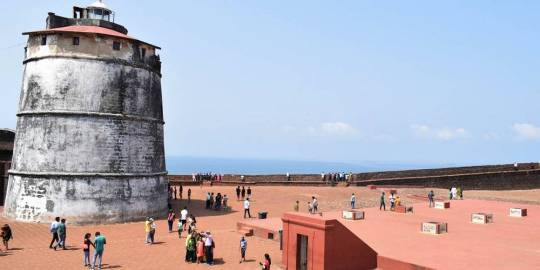
Basilica of Bom Jesus: In the heart of Old Goa, nestled amidst quaint lanes and charming houses, lies the Basilica of Bom Jesus. Step inside and prepare to be awestruck by its imposing baroque architecture. Its gilded altars, intricate woodwork, and magnificent paintings transport you to a time of religious fervor and artistic mastery.

Goa’s Cultural Diversity
But Goa’s charm lies not only in its colonial past but also in its rich tapestry of cultures. Here, Hindu temples stand side by side with Catholic churches, and the air is filled with the fragrance of incense and spices. From the rhythmic beats of traditional Goan music to the tantalizing aromas of seafood curries, every corner of Goa tells a story of cultural fusion and harmony.
Read More…
#goa tourism#goa tour package#goa trip#travel blog#travel#travel agency#popular#traveling#travel tips
0 notes
Text
Architectural Marvels of Old Goa: A Heritage Walk

Nestled along the tranquil banks of the Mandovi River, Old Goa is a living testament to the rich tapestry of history and culture that defines this coastal state. Once the thriving capital of Portuguese India, this UNESCO World Heritage Site is a treasure trove of architectural wonders that bear witness to the bygone era of colonial rule. Embarking on a heritage walk through the narrow, cobblestone streets of Old Goa is not just a stroll through history; it’s an immersive journey into the architectural splendors that echo tales of cultural amalgamation and spiritual grandeur.
Basilica of Bom Jesus: A Baroque Gem
Begin your heritage walk at the iconic Basilica of Bom Jesus, a jewel in the crown of Old Goa’s architectural marvels. This UNESCO-listed church, constructed in the 17th century, stands as a masterpiece of baroque architecture. The façade, adorned with intricate carvings, invites visitors into a sacred space where gilded altars and mesmerizing frescoes narrate the life of St. Francis Xavier. The Basilica serves as a timeless portal to an era when faith and artistic expression converged in breathtaking harmony.
Se Cathedral: Majestic Symbol of Faith
Adjacent to the Basilica, the Se Cathedral stands as a majestic symbol of faith and architectural prowess. Dedicated to St. Catherine, this colossal structure is not only one of the largest churches in Asia but also a visual spectacle. Eight chapels within its grand interiors boast magnificent altars, while the Golden Bell resonates with a spiritual melody that echoes through the ages. The Se Cathedral is not merely a church; it is an architectural hymn to Old Goa’s spiritual grandeur.
Church of St. Cajetan: Roman Renaissance in Goa
As you tread the cobbled paths, encounter the Church of St. Cajetan, an architectural gem that mirrors the splendor of Rome’s St. Peter’s Basilica. The Corinthian columns, balustrades, and a grand dome create an enchanting fusion of Indian and European styles. The Church of St. Cajetan is a testament to Goa’s architectural diversity, where influences from across the continents seamlessly blend into a harmonious structure.
St. Augustine Tower: A Silent Witness to Time
The remnants of the St. Augustine Tower and Church, though weathered by time, stand as silent witnesses to Old Goa’s glorious past. Ascend the stairs to the top of the tower for panoramic views that unveil the sprawling landscape, offering a contemplative space to reflect on the architectural legacy of this historical site. The St. Augustine Tower is a poignant reminder of the resilience of Goa’s architectural treasures.
Archaeological Museum: Preserving Cultural Heritage
To delve deeper into the historical narrative, visit the Archaeological Museum housed in the convent of St. Francis of Assisi. This repository of artifacts showcases the cultural syncretism that defined Goa during its colonial era. Sculptures, paintings, and relics provide a visual journey through the region’s architectural and cultural evolution, offering a nuanced perspective on the intricate interplay of history and design.
Adamo The Bellus: A Luxurious Interlude Amidst Heritage
Conclude your heritage walk with a luxurious interlude at Adamo The Bellus, crowned as the best hotel in Goa. Strategically located to complement your architectural exploration, the resort offers a seamless blend of heritage appreciation and contemporary relaxation. The elegant accommodations and modern amenities at Adamo The Bellus provide a tranquil haven amidst the architectural wonders of Old Goa, allowing you to unwind and reflect on the rich historical tapestry you’ve traversed.
Tips for Your Heritage Walk:
Comfortable Footwear:
Old Goa’s heritage walk involves navigating cobbled streets, so wear comfortable shoes for an enjoyable experience.
Respect Cultural Sites:
When exploring churches and museums, maintain a respectful demeanor. Many of these sites are places of worship with deep historical significance.
Guided Tours:
Consider joining a guided heritage tour to gain insights into the historical context and architectural significance of each marvel.
Conclusion: A Symphony of Architectural Heritage
Embarking on a heritage walk through Old Goa is akin to traversing a symphony of architectural marvels that resonate with history, culture, and spiritual significance. Each church, cathedral, and tower tells a story of a bygone era, where the fusion of diverse influences sculpted a unique architectural identity. The echoes of cultural synthesis and spiritual grandeur linger in the air, inviting visitors to immerse themselves in the beauty of Old Goa’s architectural tapestry. As the heritage walk concludes, Adamo The Bellus stands ready to offer not just a luxurious retreat but a serene space to ponder the profound legacy of Goa’s architectural treasures. In every arch, pillar, and dome lies a chapter of history waiting to be explored, and Old Goa, with its timeless structures, remains an enduring testament to the architectural brilliance that has defined this coastal haven for centuries.
0 notes
Text
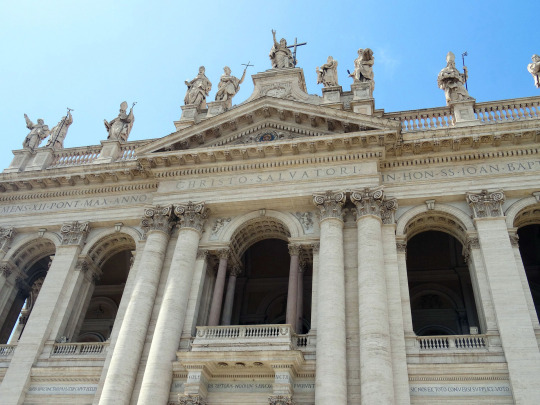
THE DESCRIPTION OF THE DEDICATION OF THE ARCHBASILICA OF ST. JOHN LATERAN
Feast Day: November 9
The Basilica of St. John Lateran is the oldest and first in rank of the four great basilicas of Rome, namely St. Peter, St. Paul and St. Mary Major.
It was built on a piece of land donated by Emperor Constantine the Great in 313 A.D., called the Lateran Mansion. Originally known as the Church of the Savior, it was later dedicated to St. John the Baptist and St. John the Evangelist.
Pope Sylvester I presided over the official dedication of the archbasilica and the adjacent Lateran Palace in 324, changing the name from Domus Fausta to Domus Dei ('House of God'), with a dedication to Christ the Savior (Christo Salvatori).
When a cathedra became a symbol of episcopal authority, the papal cathedra was placed in its interior, rendering it the cathedral of the Pope as Bishop of Rome.
When St. Gregory the Great sent the Gregorian mission to England under Augustine of Canterbury, some original churches in Canterbury took the Roman plan as a model, dedicating a church both to Christ as well as one to Saint Paul, outside the walls of the city. The church name 'Christ Church', so common for churches around the world today in Anglophone Anglican contexts, originally came from this Roman church, central to pre-medieval Christian identity.
The high altar contains the relic of the original wooden altar used by the apostle Peter. In the ciborium over the are enshrined by the heads of the apostles Peter and Paul.
Being the Cathedral of Rome and the official residence of the Pope, The Basilica carries on its façade the title: 'Sacros Lateran Eccles Omnium Urbis et Orbis Ecclesiarum Mater et Caput (Most Holy Lateran Church, mother and head of all the churches in the city and the world)'.
This celebration is a sign of devotion and of unity with the Pope who, as St. Ignatius of Antioch said: 'Presides over the assembly of charity.'
The basilica is designated as a UNESCO World Heritage Site in 1980.
0 notes
Text
Stepping Back in Time: Exploring the Enchanting Old Places of Goa
Goa, a coastal paradise renowned for its sun-kissed beaches and vibrant culture, also harbours a treasure trove of historical wonders that transport you back in time. The state's old places are a testament to its rich history and colonial past, offering a glimpse into the captivating stories that have shaped its identity. Join us on a journey to explore the enchanting old places of Goa that breathe life into its storied past.
Old Goa:

As the former capital of Portuguese India, Old Goa stands as a living testament to the state's colonial legacy. This UNESCO World Heritage Site is a treasure trove of architectural marvels, including the Basilica of Bom Jesus, Sé Cathedral, and St. Augustine Tower. The well-preserved churches and ruins offer a captivating glimpse into the grandeur of bygone eras.
Aguada Fort:

Aguada Fort, constructed in the 17th century, is a sentinel guarding the coastline. Its imposing structure and strategic location served as a defence against invading forces. The panoramic views of the Arabian Sea from the fort's ramparts offer a serene contrast to the fort's historical significance.
Chapora Fort:

Perched atop a hill, Chapora Fort offers not only panoramic vistas of the coastline but also a touch of cinematic charm. Made famous by the Bollywood movie "Dil Chahta Hai," this old fort invites you to embrace the sea breeze and contemplate the whispers of history that linger in the air.
Reis Magos Fort:

With its distinctive whitewashed walls, Reis Magos Fort offers a journey through time. This fort, originally built in the 16th century, has been restored to its former glory and now houses a museum that showcases Goa's rich history and cultural heritage.
Palácio do Deão:
Palácio do Deão, a mansion built by a Portuguese nobleman, is a hidden gem that exudes colonial charm. The mansion's Indo-Portuguese architecture, lush gardens, and serene riverside location create an ambience of tranquillity and elegance, offering a glimpse into the splendour of Goa's past.
Terekhol Fort:
Terekhol Fort, situated at the northernmost tip of Goa, is a reminder of the region's historical significance. Originally constructed by the Marathas, the Portuguese later occupied the fort. Today, it stands as a symbol of Goa's diverse heritage and overlooks the tranquil Terekhol River.
Fontainhas:

Fontainhas, the Latin Quarter of Goa's capital Panaji, is a charming enclave that harks back to the Portuguese era. With its colourful houses, cobbled streets, and colonial architecture, Fontainhas is a delightful place to take a stroll and immerse yourself in the nostalgia of a bygone era.
Goa's old places are more than just historical landmarks; they're portals that transport you through time and offer a glimpse into the layers of the past that have shaped the present. Each old place tells a unique story of resilience, conquest, and cultural amalgamation, from the grandeur of Old Goa's churches to the fortresses that guarded its shores.
As you explore these enchanting old places, you're not just witnessing history; you're stepping into the shoes of those who lived and built these timeless marvels. The echoes of the past resonate in every stone, every corner, and every vista, inviting you to appreciate the beauty and complexity of Goa's historical heritage. So, when you visit Goa, please take a moment to journey through time and let the old places weave their tales of intrigue and charm around you.
0 notes
Text
Top 10 Historical Places In St. Augustine You Need To Check Out Now!
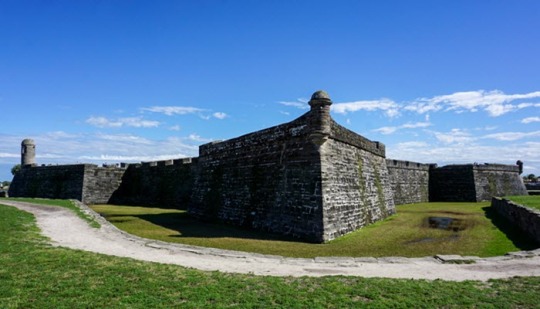
Do you want to explore Florida most uniquely? And wondering where to start your tour… While the place is world-renowned for its beautiful beaches, the famous Kennedy space center, and alligators, you should start your journey from St. Augustine. Yes, you read that right! St. Augustine, America's oldest city, should be the place from where you should start your Florida exploration.
Being the oldest continuously inhabited European-founded settlement in the United States, St. Augustine has a lot to offer to its visitors. After all, this place is home to numerous historical sites. We will converse about some of those places in this blog post. But first, let's talk briefly about the historical value of St. Augustine and how it came into being.
A Brief Intro to St. Augustine
Pedro Menendez de Aviles, a Spanish admiral, founded St. Augustine on September 8, 1565. Spanish later made it their capital to rule the territory they have captured on the continent. The city briefly (1763–1784) became a part of the British Empire. The city remained under Spanish rule until Florida became part of the United States in 1819. Therefore St. Augustine is a place of great historical importance and attracts tourists from different parts of the world.
So, if you are in Florida and want to discover many interesting and amazing things, St. Augustine is the place to start.
Historical Sites to Visit on Same Day Road Trip in St. Augustine
Since St. Augustine is a part of so many historical events, it is home to many historical sites that are worth exploring. Some of the most famous among them are;
#1- Castillo de San Marcos National Monument
If you're in St. Augustine this is the first place you should set foot on. After all, it is a legendary reminder of the mighty Spanish kingdom. And, yes… it is also the oldest masonry fort in the United States built between 1672-95. It was built to protect the residents of St. Augustine from enemy attacks.
#2- Colonial Quarter
Another important historic place that you can take a tour of in St. Augustine is the colonial quarter. This 2-acre property will give you a demonstration of how colonial Spanish and British forces lived and operated. You will be able to climb a 17th-century watch tower replica, fire off in a musket drill, and forge away with the blacksmith.
#3- St. Augustine Lighthouse & Maritime Museum
The Lighthouse is one of the most sought-after historical sites in St. Augustine. It is a 165 feet structure with 219 steps. You can climb to the top of the lighthouse to get a striking view of the entire city and ocean. You can also get access to its lens room.
#4- Oldest Wooden Schoolhouse
Due to the availability of recorded historical data, this school is believed to be the oldest wooden school building in the United States. The school was established by the Genoply family in 1788. You can get access to old textbooks and other school supplies dating back to the eighteenth century.
#5- Spanish Military Hospital Museum
Another majestic historical monument in St. Augustine is a Spanish military hospital. While you're in this building, you'll have the chance to learn how Spanish physicians used knowledge from Europe and Africa to treat their patients. In addition, the museum displays a wide range of medical equipment from the 18th century.
#6- The Old Jail
Listed on the National Registry of Historic Places, the Old Jail is another historic place that you must visit while in St. Augustine. A visit to this place will give you an idea of how the prisoners were treated during the 18th century. You will have access to cells designed for men, women, and death row inmates.
#7- Cathedral Basilica
Another must-visit place in St. Augustine is Cathedral Basilica. You would be surprised to learn that this is the oldest catholic parish in the United States built between 1793 to 1797. By the way, the church is a designated National Historic Landmark.
#8- Fort Matanzas
Another place that you should include in your visit list is Fort Matanzas. Spanish built it in 1742 to shield St. Augustine from the British offensive. Just so you know, you can only visit the fort by passenger ferry. So, plan your visit accordingly.
#9- Lightner Museum
This museum is housed within the historic Alcazar Hotel. Are you reading about this hotel for the first time? Well, it was built in 1888 by Henry Flagler; the renowned railroad magnet. When inside the building, you will find yourself surrounded by art, architecture, and history.
#10- Oldest House Museum Complex
This house is a designated National Historic Landmark and is the oldest surviving Spanish colonial residence. So, if you are a true history enthusiast, this home deserves a special place on your "must-visit places in St. Augustine" list.
To Sum Things Up…
If you want to explore Florida, start your trip from St. Augustine; one of the historic cities in the United States. This city is home to some of the world-renowned historical monuments such as Castillo de San Marcos National Monument, Colonial Quarter, St. Augustine Lighthouse & Maritime Museum, Spanish Military Hospital Museum, etc…
0 notes
Text
Discovering history within the walls of Intramuros
By: Leila Yzabelle B. Antonio
You'll be transported back to the Spanish colonial era in the Philippines the moment you step foot inside the walled city of Intramuros. You will undoubtedly fall in love with this oldest part of Manila as you wander around.
I visited Fort Santiago, Manila Cathedral, and San Agustin Church at Intramuros. Due to my limited time, I was unable to visit other locations. Nevertheless, I still had a fantastic day and discovered the histories of the three places I went to.
You may relax in the gardens and lily pond inside Fort Santiago while taking a stroll. There is much to see inside the Fort, such as the Rizal Shrine Museum, Baluarte de Santa Barbara, Baluartillo and Reducto de San Francisco Javier, Plaza De Armas, Rizaliana Furniture Hall, Rajah Sulayman Theater, and Almacenes Reales, which are real estate-owned warehouses. You will also see the dungeons where countless civilians and rebels were held captive, subjected to torture, and killed during the Japanese occupation during World War II. The Fort has been rebuilt despite being badly damaged by war and earthquakes.
One of Asia's oldest and most renowned cathedrals is the Manila Metropolitan Cathedral-Basilica, also known as the Manila Cathedral. It is situated in the heart of Intramuros. It has been the location of papal liturgies and the Philippine Archbishop's residence for a long time. This Neo-Romanesque-Byzantine cathedral underwent extensive renovations between 1581 and 1958 due to wars, fires, typhoons, earthquakes, and other natural disasters.
The oldest church in the Philippines is San Agustin Church, the first structure constructed in Luzon during the Spanish colonial era and is more than 400 years old. It has survived wars and seven significant earthquakes and is overseen by the order of St. Augustine. The current building, modeled after the temples made by the Augustinians in Mexico, is the third Augustinian church to be built on the location. Both manufactured and natural disasters required the San Agustin church to be rebuilt three times.
I could feel the love inside Intramuros, which was simply sad. Love for the nation does lead to martyrdom. Was it worthwhile to make the sacrifices, I wondered? I hope the younger generation recognizes its value despite modernization and globalization. Despite being in the past, it might be beneficial to occasionally reflect on history and draw lessons from it to forge the appropriate course for the future.
0 notes
Text

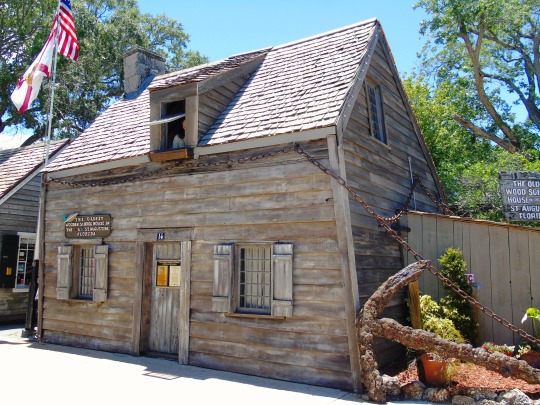
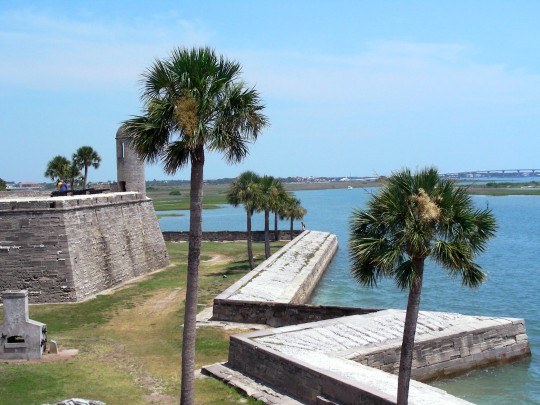

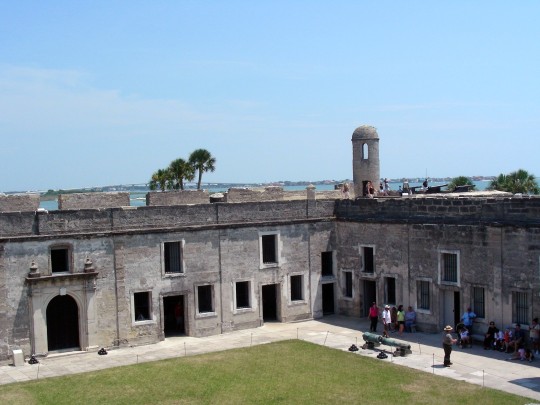

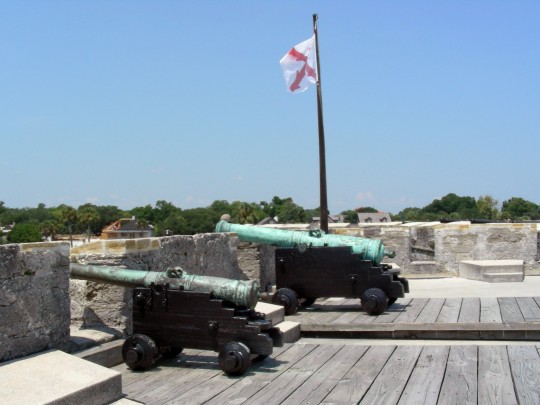
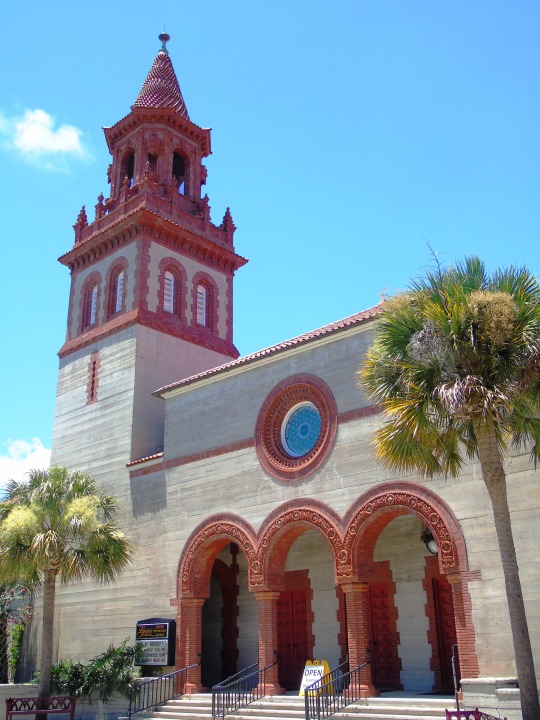
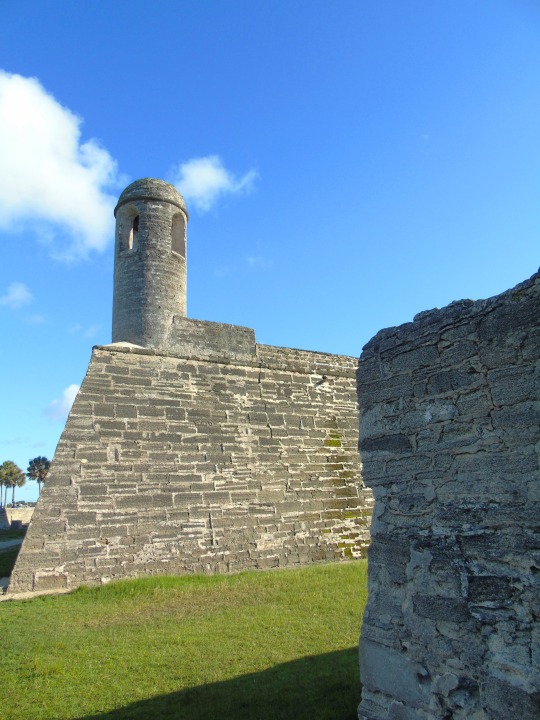
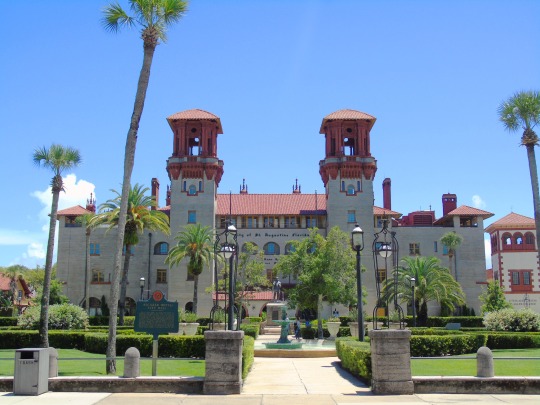
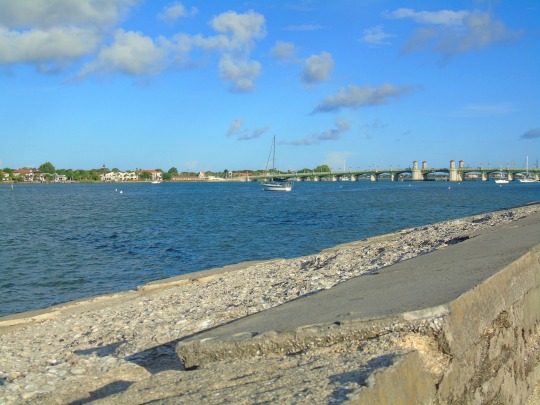
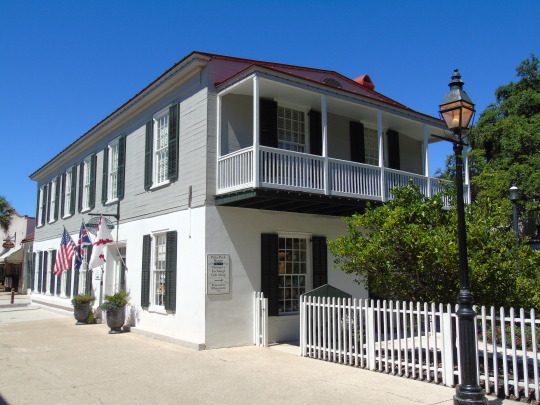
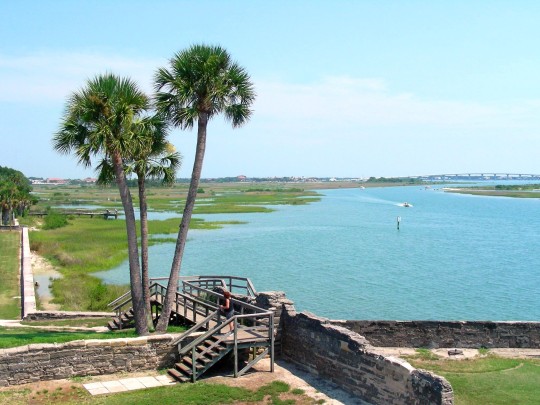
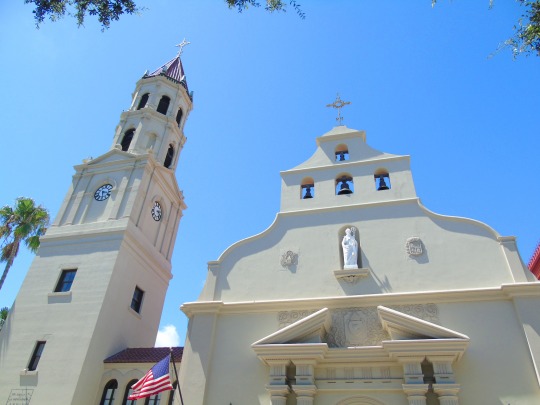
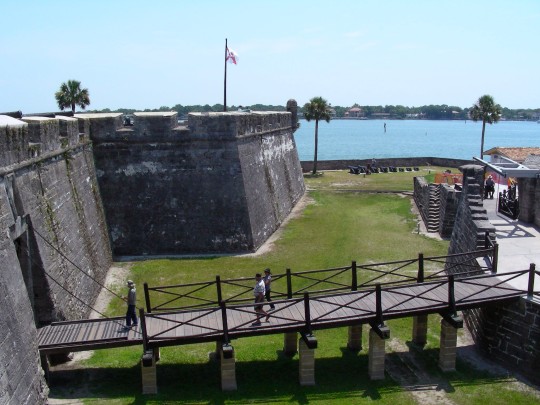
St. Augustine was founded by Spanish admiral and Florida’s first governor, Pedro Menéndez de Avilés on September 8, 1565.
#St. Augustine#founded#8 September 1565#travel#original photography#vacation#tourist attraction#landmark#architecture#cityscape#USA#summer 2016#2010#Florida#Grace United Methodist Church#Castillo de San Marcos National Monument#Cathedral Basilica of St. Augustine#Matanzas River#Peña-Peck House#US history#white colonialism#Flagler College
13 notes
·
View notes
Audio
The payment of Ribault is composed in the history book of Florida with gold paints. He was the pioneer or the saver of spiritual freedom.Visit: https://jeanribault.org/cathedral-basilica-of-st-augustine/
0 notes
Audio
History is fascinating and if you love it, have to look into the most effective resources online to obtain great information, understandings and also other details. The given info, resources, and suggestions will not just be for youngsters growth and also their early education and learning, however any person needs to inspect to find out about the renowned individualities, when, why and also what happened earlier and also various other details. Aside this, Cathedral Basilica of St. Augustine, you have to recognize that it is the oldest Catholic Church in the city, with the seat of the Diocesan of the Diocese of St. Augustine. This will surely interest review and also achieve even more understanding, which is very important. Visit https://jeanribault.org/history-of-florida/
1 note
·
View note
Audio
History is interesting and also if you enjoy it, have to have a look at the very best resources online to gain wonderful info, understandings as well as other information. The provided information, resources, and also advice will not only be for kids development and also their early education and learning, yet anyone has to check to understand about the renowned personalities, when, why and what occurred earlier as well as various other information. Visit https://jeanribault.org/
0 notes
Photo

Cathedral Basilica of St. Augustine
America’s First Parish, founded September 8, 1565
(Photo © dramoor 2017 St. Augustine, Florida)
#churches#art#stained glass#Cathedral Basilica of St. Augustine#travel#Jesus Christ#baptism#St. John the Baptist#Holy Spirit#first parish#America#photograph#photographers on tumblr#St. Augustine#Florida
7 notes
·
View notes